17 Apr 2019
History of expert networks – the only Constant thing is Change

‘Expert networks’ is probably the most impactful industry that most people have never heard of. Here’s the history of expert networks, how they started and what will happen next. This is the first in a 3-part series on expert networks and their economics.
An expert network is typically working on behalf of an investment firm. It finds industry experts that the investment firm can discuss M&A deals and strategic opportunities with. When the expert network sources experts to a project, it presents only the most relevant ones to their client.
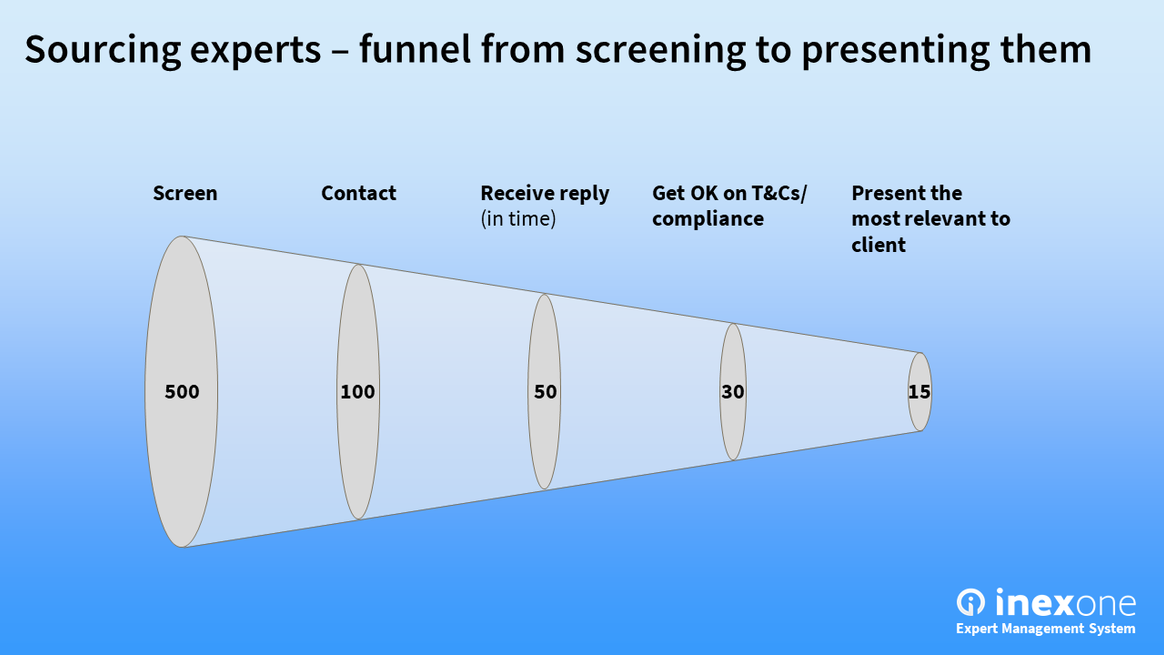
NB: This funnel for sourcing experts was introduced back in Nov-18.
Expert networks scour the web for relevant experts, screening hundreds of profiles for each request. They try to get as many experts as possible through the funnel and onto the phone with their client.
The history of expert networks
The history of expert networks starts in the late 1990’s. Most people at the time collected their contacts in a Rolodex (pictured). Expert networks built the biggest Rolodexes in town and were thereby very valuable to their clients. Here’s their value proposition in 1997:
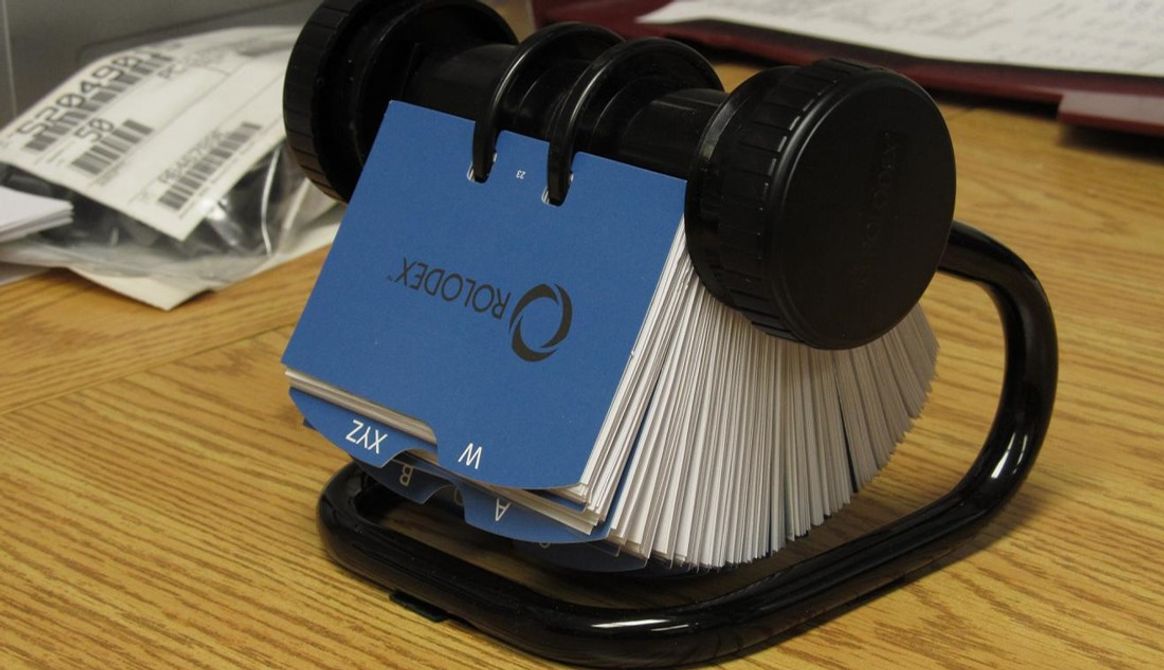
Value of expert networks: High
Uniqueness of internal database: Medium
Fast-forward to 2007, when expert networks had built databases of 100,000+ expert profiles. They still mostly recruited experts at industry fairs and via referrals. Their databases were unique and proprietary, which meant networks could charge their clients a mark-up of 3-4 times what they paid to experts. Economists call these excess profits “economic rent” (we will examine that closer in the next part of this series).
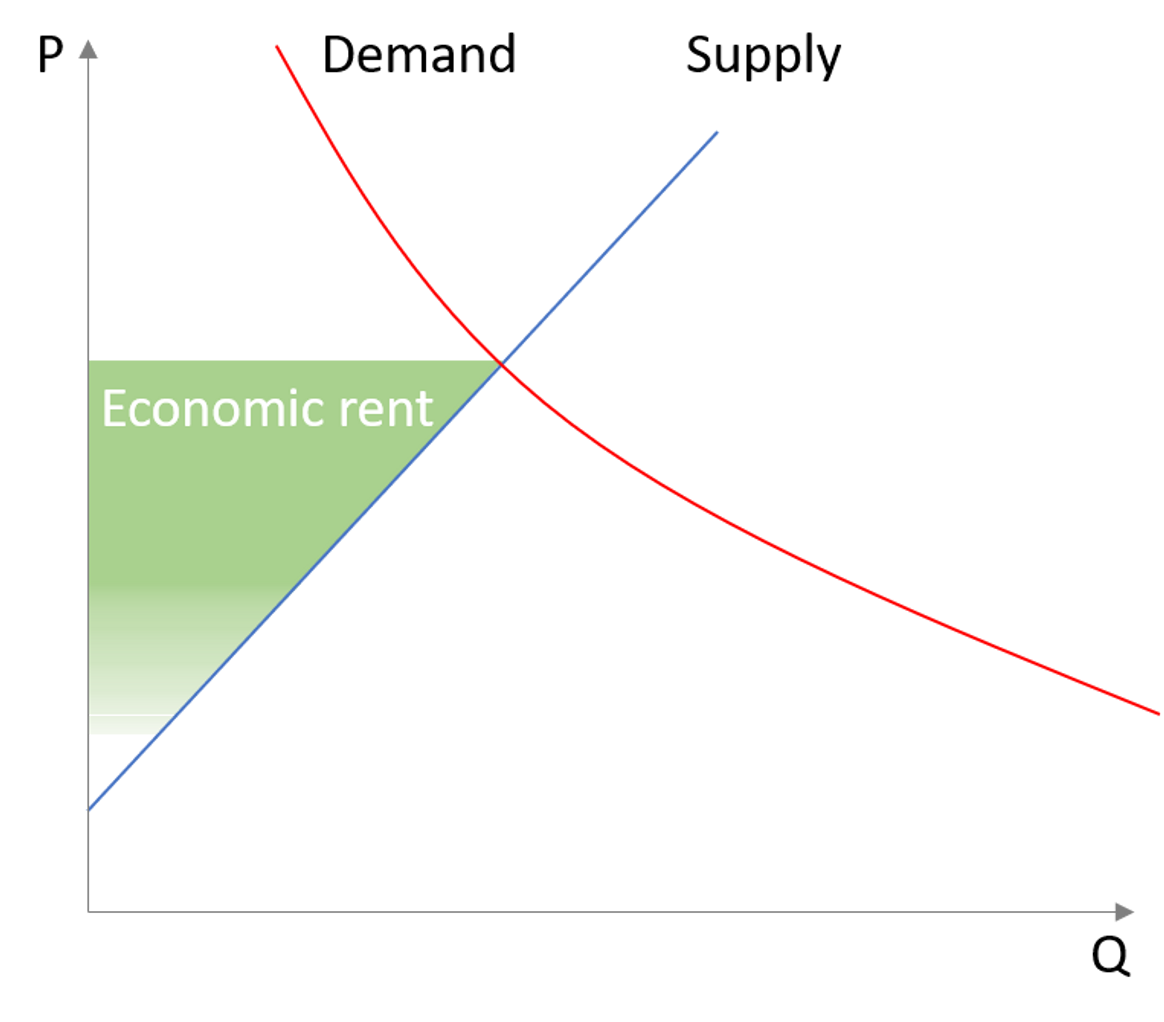
The history of expert networks has seen a large share of economic rent being fairly stable over time
Value of expert networks: High
Uniqueness of internal database: High
Over the next decade, LinkedIn grew rapidly. This enabled a new generation of expert networks that focused on custom-recruiting experts for each new project.
Today, the largest networks boast 600,000 experts in their internal databases, but most of those experts were recruited years ago. In comparison, LinkedIn has 1000x as many profiles, which are regularly updated by the users themselves.
Expert networks have remained very valuable to analysts. The big difference is they no longer derive this value from internal databases, but from having smart associates who are good at custom-recruiting experts on the internet.
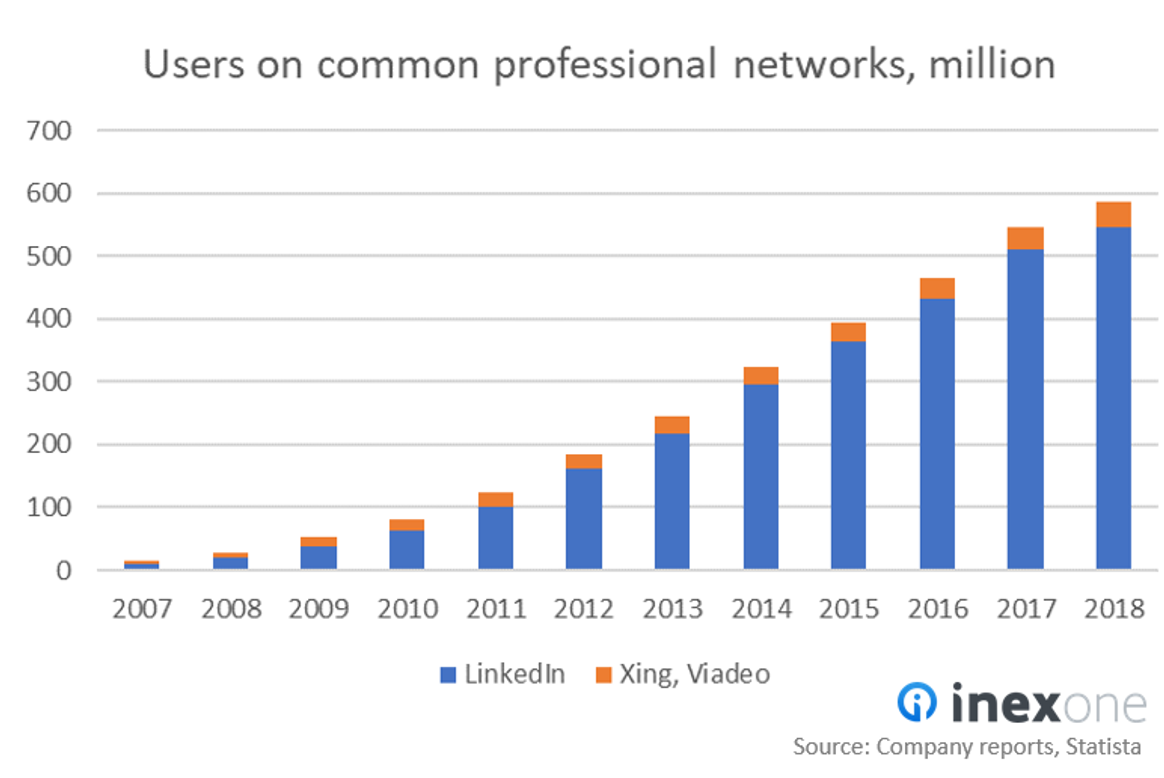
Value of expert networks: High
Uniqueness of internal database: Low
The “Alt-tab nightmare”

Now, the expert network sourcing funnel has remained the same. An expert network associate is still limited to screening a few hundred experts for each project. This means that adding more associates means the client will receive more unique experts.
Clients have figured this out: the average firm now has 4 expert networks on contract, to make them compete against each other (some have as many as 15!). Each of these networks supplies experts and project updates in a stream of emails and phone calls.
For clients, this means that one of the analysts must compile experts into a consolidated list. That person updates and distributes the latest list with the team every other day. This work includes a lot of switching between browser tabs, a bit of Copy+Paste, manual formatting, and answering the same questions multiple times. One PE investor called this the “Alt-tab nightmare”.
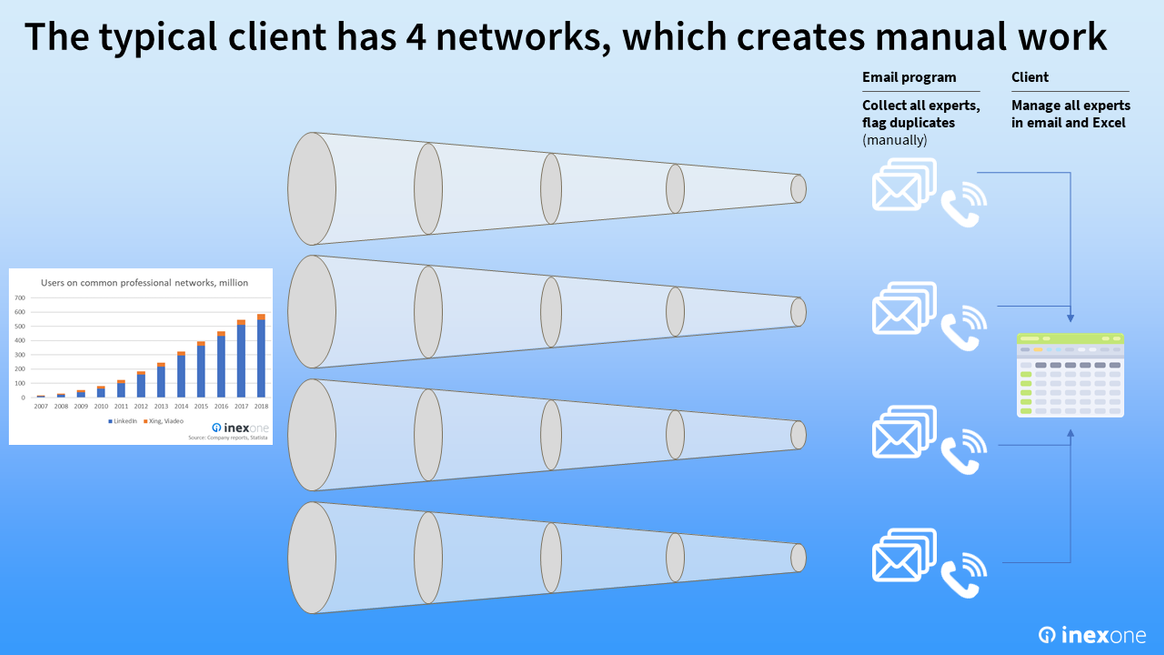
Because of this administrative hassle, the average Private Equity analyst uses just 2 expert networks, which effectively cuts the yield of experts and service time by 50%. In addition, the analyst and her firm lack a proper overview of the costs for the expert calls.
“No wonder expert calls always run over budget.”
– MBB consulting partner
The future of expert networks – there’s an app for that
Inex One offers the solution to these challenges: a single dashboard to manage all expert networks and experts. The entire team have real-time overview of experts and costs, and keep their confidential/ sensitive data secure. And all that usage data gets shared with Compliance and Research managers, to help them protect the firm and analyze its service providers.
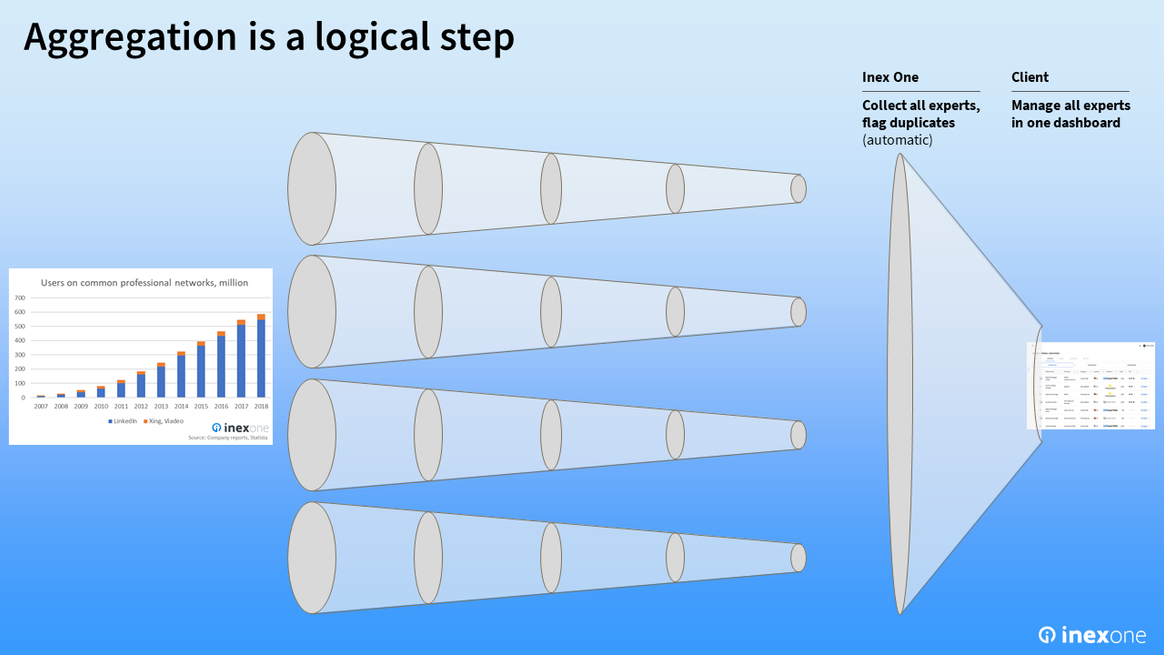
Rocking the boat
Interviewing experts is as valuable as ever: when global value chains extend and specialize, so does the need to explain them clearly. The expert network industry is growing at a healthy 15–20%, and maintains mouthwatering 60–80% gross profit margins. This is despite no longer having the unique databases that historically motivated such margins.
When Inex One began pointing this out in early 2018, this was a contrarian view. Most users agreed that dealing with expert networks is cumbersome, but only a few had started to question the established paradigm (the idea that expert network value is derived from an internal database of experts).
Be the change
Great investors tend to develop contrarian views. They see opportunities and trends before others do. If you use expert networks today, you can act on this insight and bring efficiency and savings to your firm. Ask your networks to support your transition to an efficient workflow. Try out the Expert Management System today.